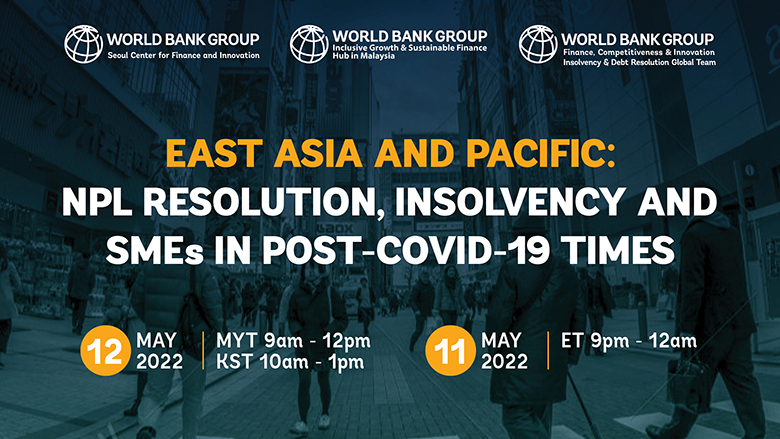Many governments, supervisory and macroprudential authorities in EAP and worldwide have taken bold and large-scale action to mitigate the effects of the COVID-19 pandemic on economies and banking systems. International standard setters have guided how flexibility in the macro and micro-prudential framework should be implemented. A significant part of the policy measures deployed internationally focus on loan forbearance. In addition, preparing the enabling environment for efficient and effective Non-Performing Loan resolution has gained importance to maintain banking sector stability.
The risk of a rise in Non-Performing Loans, coupled with a high degree of corporate vulnerability and low-performing insolvency systems, could set the stage for a ‘perfect storm’ of firm failure. Small and medium enterprises (SMEs) form the majority of enterprises in most economies and accordingly, many governments around the world are currently examining policies to address this large but vulnerable group of economic actors to maximize value preservation and facilitate market exit where necessary.
Many SMEs in East Asia and the Pacific have felt severe impacts of the COVID-19 pandemic. COVID-related social distancing, temporary closures, and health and safety directives have interrupted business, cut labor productivity, and reduced revenues—leaving many unable to meet debt obligations as they come due. While the employment and earning impacts of the pandemic have been large and widespread, larger firms have been recovering faster than SMEs—with SMEs both more vulnerable to the crisis and less able to adapt by going digital. The monthly sales of SMEs have fallen by 7 to 23 percentage points more than larger firms in EAP countries. In many countries in East Asia, SMEs represent more than 95 percent of businesses and provide well over 50 percent of employment.
To mitigate these effects, authorities in East Asia and Pacific jurisdictions have adopted a battery of fiscal, monetary, and financial measures to reduce the impact of the COVID-19 on the real economy. Public guarantee schemes and other forms of credit enhancements have also been implemented to support the flow of credit. Authorities provided some degree of regulatory relief to financial institutions to keep the flow of credit to the economy. In addition, the COVID-19 crisis has spurred some reforms to the financial infrastructure in some East Asia and Pacific jurisdictions.
Yet challenges remain with respect to effective management of the build-up of Non-Performing Loans. Non-Performing Loan ratios in East Asia and Pacific do not necessarily capture the full spectrum of non-performing exposures and may be painting a deceptively reassuring picture, as credit risk that may arise is not captured by reported NPL ratios so banks may not be provisioning adequately for credit losses. Another opportunity for reform could be from the improvement of existing restructuring tools under national insolvency frameworks and enhanced out of court tools should be deployed to encourage negotiations between private debtors and their creditors, which has been a successful tool in past crises.
Objectives:
The workshop will provide a forum to take stock of the economic effects of the COVID-19 crisis so far in the East Asia and Pacific region, on the economy’s financial sector and vulnerable sectors particularly Small and Medium Enterprises. The primary objective of this workshop is to share experiences and lessons from other countries to identify good practices in prudential supervision and regulation and a robust enabling environment for Non-Performing Loan resolution and to facilitate private sector participation.
Speakers will also discuss the existing tools (legal and regulatory) in selected jurisdictions of East Asia and Pacific to address business failure of SMEs, in particular, and the role of the financial sector and the insolvency courts in this regard. Furthermore, the workshop will provide an overview of restructuring options within the East Asia and Pacific region and possible approaches for enhancing business restructuring using available out of court and court tools.
